Consider the situation shown in figure. Both the pulleys and the strings are light and all the surfaces are frictionless. Calculate
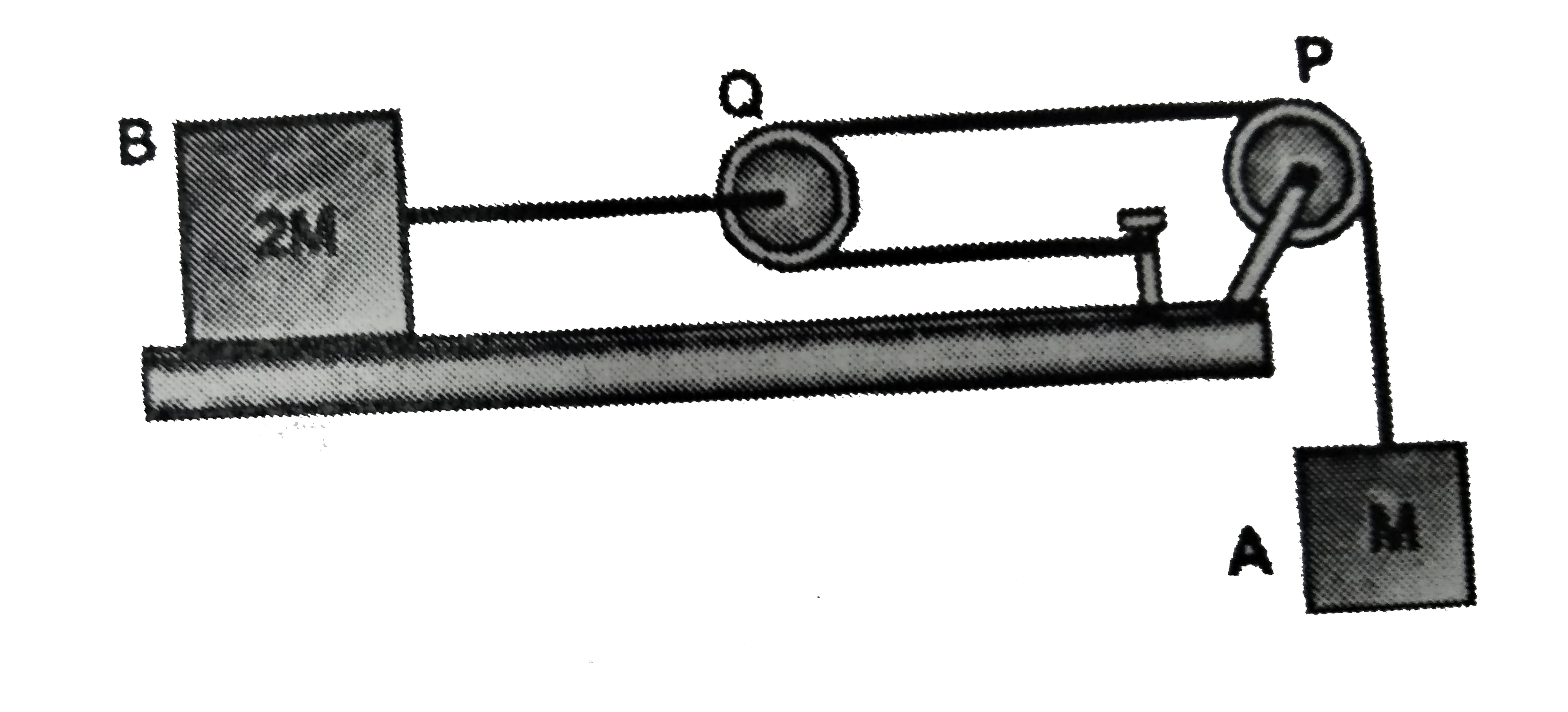
(a) the acceleration of mass M,
(b) tension in the string PQ and
(c ) force exerted by the pulley P.
As pully Q is not fixed so if it moves a distance d athe length of string between P and Q will changes by 2nd ( d from above and d from below), i.e., M will move 2d. This in turn implies that if a is the acceleration of M the acceleration of Q and of 2M will be a2. now if we consider the motion of mass M, it is accelerated downward, so
T=M(g-a)........(i)
And for the motion of Q
2T−T'0×a2=0⇒T'=2T .......(ii)
And for the motion of mass 2MT'=2M(a2),⇒T'=Ma (iii)
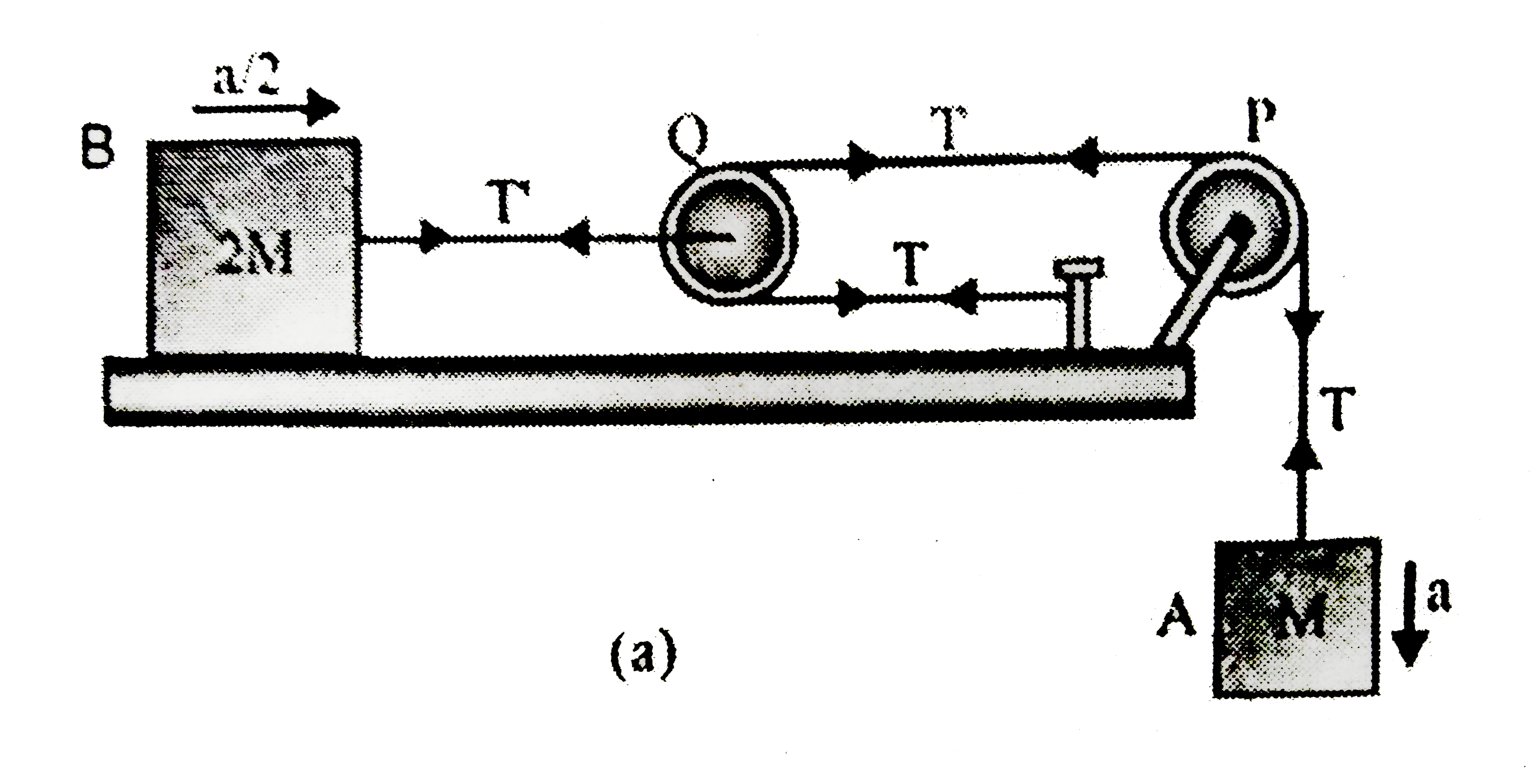

(a) From equation (ii) and (iii) as T=12Ma, so equation (i) reduces to T=12Ma(g−a)⇒a=23g while tension in the string PQ from equation (1) will be T=M(g−23g)=13Mg
(c ) Now from figure (b), it is clear that force on pulley by the clamp will be equal and opposite to the resultant of T and T at 90∘ to each other, i.e.,
(N2)=√T2+T2=√2T=√23Mg
Topper's Solved these Questions
- NEWTON'S LAWS OF MOTION & FRICTIONBOOK - ALLENCHAPTER - NEWTON'S LAWS OF MOTION & FRICTIONEXERCISE - EXERCISE (S-1)
26 Videos
- NEWTON'S LAWS OF MOTION & FRICTIONBOOK - ALLENCHAPTER - NEWTON'S LAWS OF MOTION & FRICTIONEXERCISE - EXERCISE (S-2)
9 Videos
- MOTION IN A PALNEBOOK - ALLENCHAPTER - MOTION IN A PALNEEXERCISE - SOLVED EXAMPLE
28 Videos
- NEWTONS LAWS OF MOTIONBOOK - ALLENCHAPTER - NEWTONS LAWS OF MOTIONEXERCISE - EXERCISE-III
28 Videos
Similar Questions
Consider4 the situation shown in figure. Bothe the pulleys and the string are light and all the surfaces are friction less. a. Find the acceleration of the mass M. b. Find the tension in the string c. Calculate the force exerted by the clamp on the pulley A in the figure.
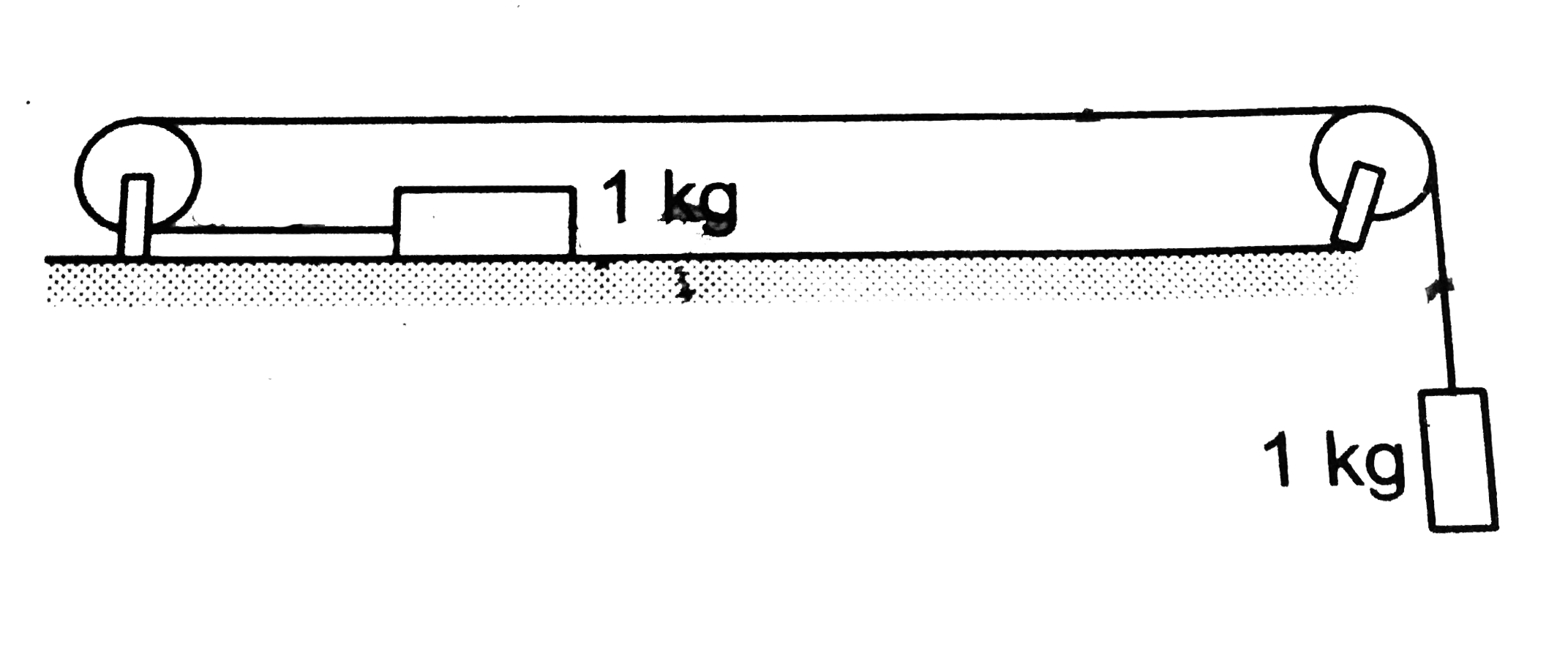
View SolutionIn the situation shown in figure, both the pulleys and the strings are light and all the surfaces are frictionless. The acceleration of mass M, tension in the string PQ and force exerted by the clamp on the pulley, will respectively be -
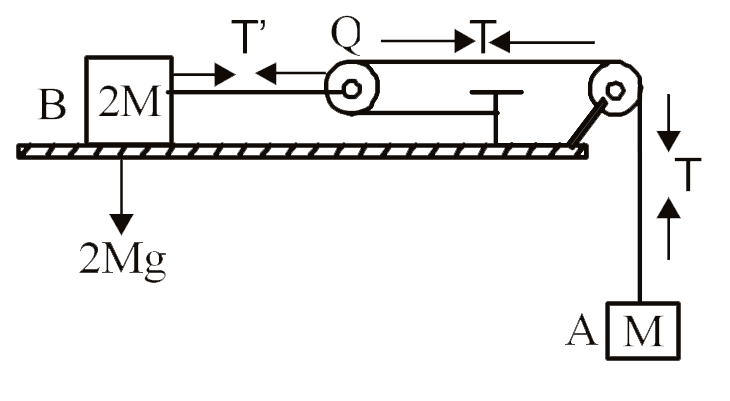
View Solution
Knowledge Check
Consider the system as shown in the figure. The pulley and the string are light and all the surfaces are frictionless. The tension in the string is (g=10m/s2) .
 A0NB1NC2ND5N
A0NB1NC2ND5NConsider the system shown in figure. The pulley and the string are light and all the surface are frictionless. The tension in the string is (Take g=10m/s2)
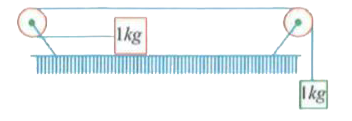 A0NB1NC2ND5N
A0NB1NC2ND5N
In the situation shown in figure, both the pulleys and the strings are light and all the surfaces are frictionless. The acceleration of mass M, tension in the string PQ and force exerted by the clamp on the pulley, will respectively be -

View SolutionConsider the situation shown in figure .Both the pulleys and the string and light and all the surfaces are smooth.
(a) Find the acceleration of 1kg block.
(b) Find the tension in the string. (g=10m/s2).
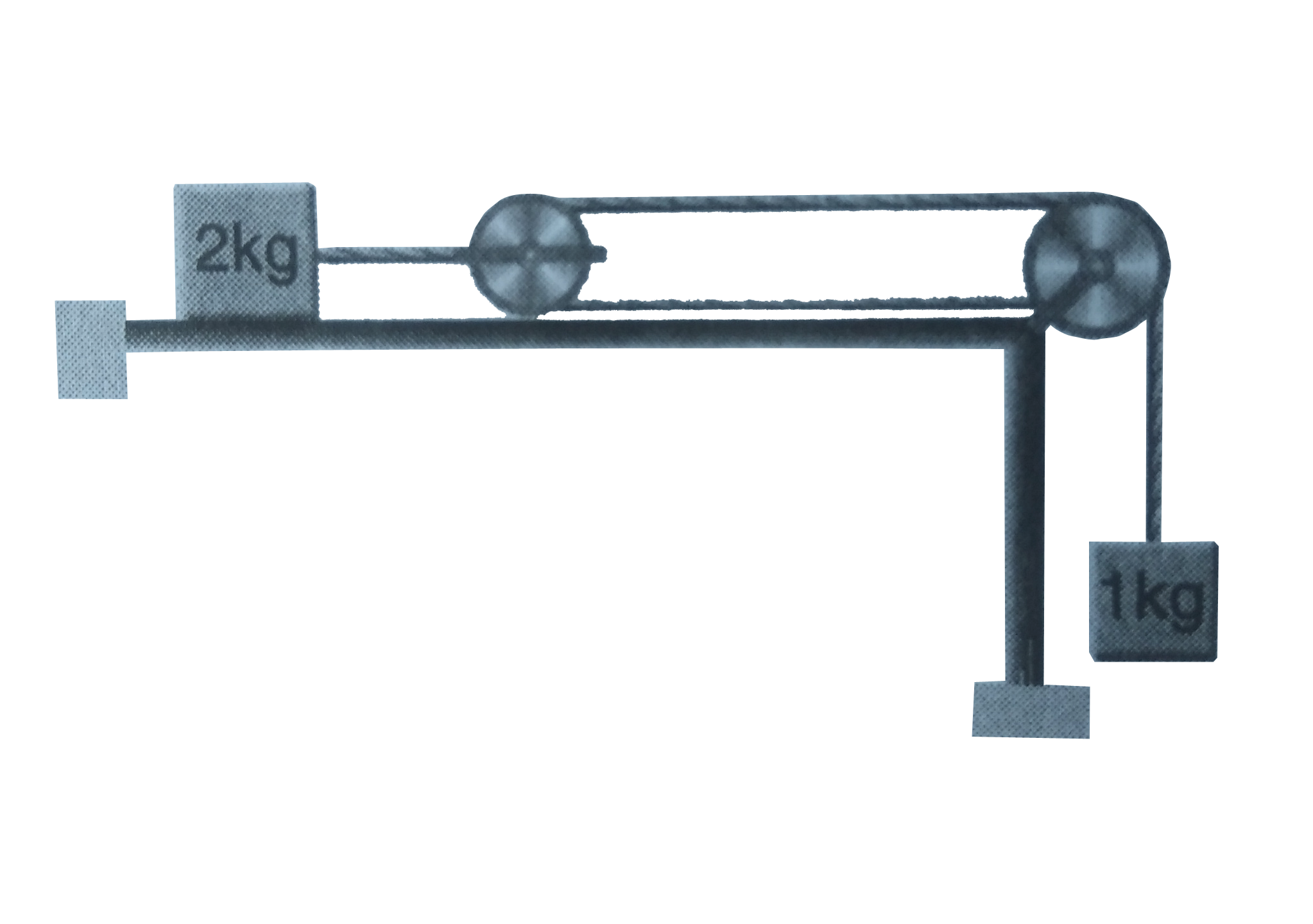
View SolutionConsider the situation shown in figure .Both the pulleys and the string and light and all the surfaces are smooth.
(a) Find the acceleration of 1kg block.
(b) Find the tension in the string. (g=10m/s2).

View SolutionCalculate the tension in the string shown in figure. The pulley and the string are light and all surfaces are frictionless. Take g=10 m/s2.
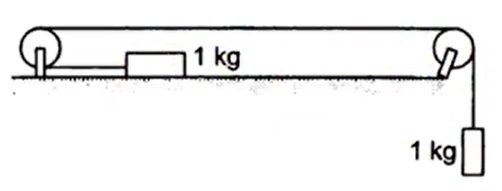
View SolutionCalculate the tension in the string shown in figure. The pulley and the string are light and all surfaces are frictionless. Take g=10 m/s2.

View SolutionIn the shown arrangement , both pulleys and the string are massless and all the surface are frictionless. Find the acceleration of the wedge.

View Solution
